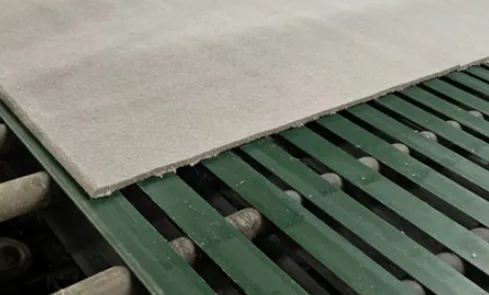- Afrikaans
- Albanian
- Amharic
- Arabic
- Armenian
- Azerbaijani
- Basque
- Belarusian
- Bengali
- Bosnian
- Bulgarian
- Catalan
- Cebuano
- Corsican
- Croatian
- Czech
- Danish
- Dutch
- English
- Esperanto
- Estonian
- French
- German
- Greek
- Hindi
- Indonesian
- irish
- Italian
- Japanese
- Korean
- Lao
- Malay
- Myanmar
- Norwegian
- Norwegian
- Polish
- Portuguese
- Romanian
- Russian
- Serbian
- Spanish
- Swedish
- Thai
- Turkish
- Ukrainian
- Uzbek
- Vietnamese
lis . 09, 2024 17:14 Back to list
Applications and Benefits of Mineral Fiber Planks in Modern Construction and Design
The Benefits of Mineral Fiber Planks in Construction
In the realm of modern construction and architecture, mineral fiber planks have gained considerable attention for their unique properties and versatility. These high-performance materials, primarily composed of natural mineral fibers, offer a range of advantages that make them an ideal choice for various applications, including ceiling tiles, wall panels, and insulated roof systems. This article explores the benefits of mineral fiber planks, highlighting their durability, acoustic properties, fire resistance, and environmental sustainability.
Durability and Strength
One of the most significant advantages of mineral fiber planks is their exceptional durability. The composition of these planks often includes a blend of natural minerals and synthetic fibers, resulting in a robust material that can withstand considerable wear and tear. This makes them particularly suitable for high-traffic areas where traditional materials may degrade quickly. Additionally, mineral fiber planks are resistant to moisture and mold, which further enhances their longevity. This durability translates to lower maintenance costs and longer intervals between replacements, making them a cost-effective choice for builders and property owners alike.
Acoustic Properties
In commercial and residential construction, sound management is crucial to creating comfortable living and working environments. Mineral fiber planks are renowned for their outstanding acoustic properties, making them an excellent choice for spaces where noise reduction is a priority. Their unique structure allows them to absorb sound waves effectively, reducing echo and minimizing noise transfer between rooms. This makes mineral fiber planks ideal for use in offices, classrooms, and healthcare facilities, where a quiet atmosphere is essential for productivity and well-being.
Fire Resistance
mineral fiber planks

Safety is always a primary concern in building design, and mineral fiber planks excel in this regard. They are inherently fire-resistant, thanks to their mineral composition. These materials can withstand high temperatures without melting or releasing harmful gases, providing an added layer of safety to any structure. Many building codes require specific fire ratings for ceilings and wall systems, and mineral fiber planks often meet or exceed these standards, offering peace of mind to homeowners and builders alike.
Environmental Sustainability
In an age where environmental concerns are becoming increasingly prevalent, the demand for sustainable building materials is on the rise. Mineral fiber planks are often made from recycled materials, making them an environmentally friendly option for conscientious builders. Furthermore, their production process typically involves lower energy consumption compared to traditional building materials, reducing their overall carbon footprint. By choosing mineral fiber planks, builders can contribute to a more sustainable future while still achieving the high performance and durability required for modern construction projects.
Versatility in Design
Another appealing aspect of mineral fiber planks is their versatility in design. Available in various textures, colors, and sizes, these planks can effortlessly complement a wide range of architectural styles and interior designs. Whether it’s a sleek, modern office space or a cozy residential setting, mineral fiber planks can be tailored to fit the aesthetic vision of any project. Additionally, their lightweight nature makes installation easier and less labor-intensive, allowing for quicker project timelines.
Conclusion
In conclusion, mineral fiber planks represent a remarkable innovation in construction materials. Their durability, excellent acoustic properties, fire resistance, environmental sustainability, and design versatility make them an advantageous choice for builders and architects. As the industry continues to prioritize safety and sustainability, the use of mineral fiber planks is likely to grow, solidifying their place as a staple in modern construction. Investing in this material not only enhances the quality and longevity of buildings but also contributes to creating safer and more sustainable environments.
-
Transform Interiors with PVC Gypsum Ceiling: A Stylish, Durable, and Moisture-Resistant SolutionNewsMay.19,2025
-
The Smart Interior Upgrade: Discover the Durability and Versatility of Gypsum Ceiling Access Panel SolutionsNewsMay.19,2025
-
The Smart Choice for Interior Design: Discover the Value of PVC Gypsum Ceiling SolutionsNewsMay.19,2025
-
Mineral Fiber Ceiling Tiles: The Smart Blend of Performance and AestheticsNewsMay.19,2025
-
Mineral Fiber Ceiling Tiles: The Superior Choice Over Gypsum for Sound and Fire SafetyNewsMay.19,2025
-
Mineral Fiber Ceiling Tiles: Eco-Friendly Strength and Style for Every CeilingNewsMay.19,2025







